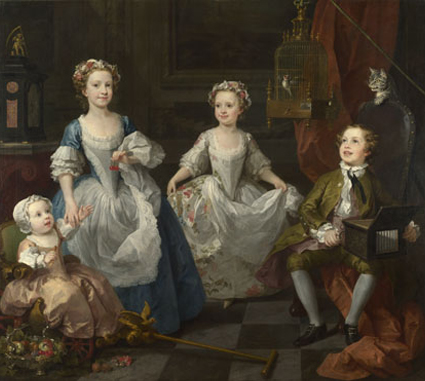Andrew Graham-Dixon reviews the Tate Gallery's massive exhibition of Hogarth and his age
WILLIAM HOGARTH always knew he was an outsider. "Portrait painting," he wrote in a fit of warranted cynicism "ever has, and always will, succeed better in this country than any other. The demand will be as constant as new faces arise; and with this we must be contented." He added, with a note of resignation, that "Paintings are considered as pieces of furniture."
"Manners and Morals: Hogarth and British Painting 1700-1760" is full of art that seems perfectly happy in its role as furniture. The exhibition's title is mis-leading, since this show never really fo-cuses on Hogarth, but on the host of mi¬nor British painters who plied their trade during this period. Hogarth's paintings are scattered sparsely among hordes of more or less conventional portraits, con-versation pieces and topographical paint-ings of town and country. In the company of so many lesser talents, Hogarth's own, very different art is almost swamped. Buried by context, his work comes across as a brief, subversive hiccup in an age dedicated to flattery.
The exhibition's project is to demon-strate how much British art changed, al¬most regardless of Hogarth, during the period. The taste for grandeur was re-placed, as French and Dutch immigrant artists introduced a vogue for less formal art on the model of Watteau or Dutch "merry company" scenes, by a lighter, less imposing style. But looking for exam-ple, at Bartholomew Dandrige's breezily pastoral portrait of The Ladies Noel — three young ladies, in fluttery gowns, strike attitudes with their pet lambs in a blooming rococo landscape — it is hard to escape the conclusion that informality, itself, was merely a fashionable pose. There is the impression, throughout this show, of whole lives lived in fancy dress, eternally mediated by the...


